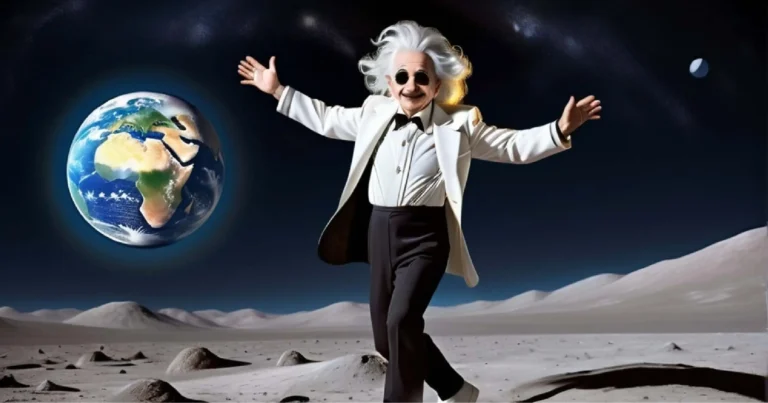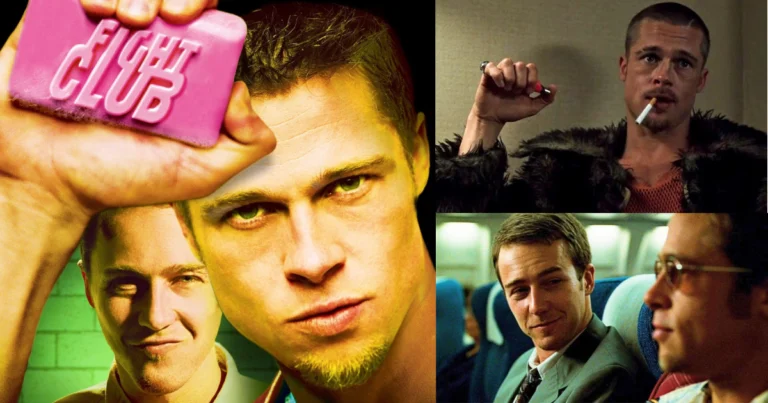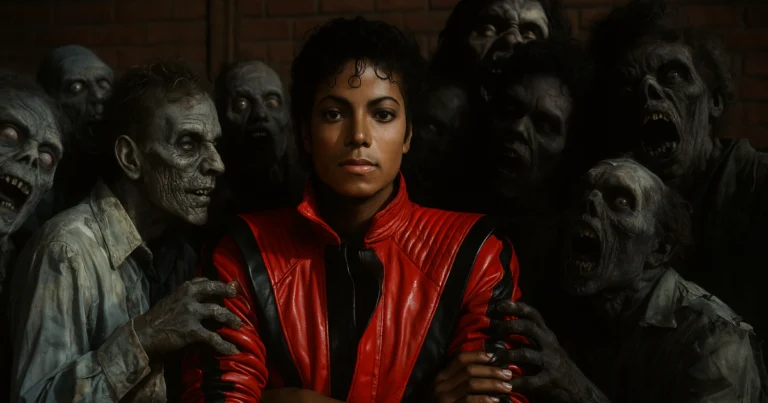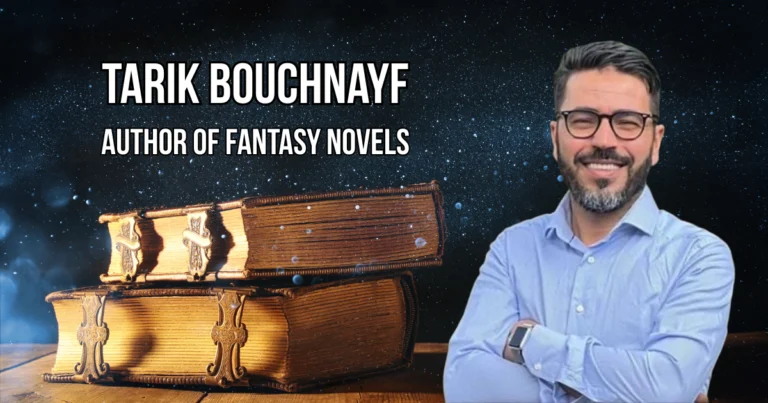Inside Inception: When reality is just a thought
What if your reality was nothing more than a dream carefully planted in your mind? What if your most cherished memories weren’t really yours, just thoughts, slipped in without your knowledge?
Released in 2010, Inception, directed by Christopher Nolan, masterfully blurs the line between dream and waking life, memory and manipulation, the intimate and the constructed. More than a science fiction film, it is a mental labyrinth where the viewer, like the characters, slowly loses their bearings. Where does reality begin? Can we truly tell the difference between a thought that comes from within and one that has been implanted? And what remains of us when our memories begin to waver?
In this dizzying plunge into the layered architecture of the mind, Nolan draws as much from psychoanalysis as he does from modern neuroscience. We follow Cobb, a thief of ideas turned prisoner of his own subconscious, in a haunting exploration of memory, grief, and the elusive power of thought.
A seed in the unconscious
“Inception’s not about stealing an idea. It’s about planting one. It’s about planting an idea deep in someone’s mind… and letting them believe it was theirs.”
Dom Cobb
This sentence contains the entire philosophical vertigo of the film. It overturns the modern myth of the autonomous individual, sovereign over their own thoughts. In Inception, ideas do not necessarily originate from the self, they can be inserted, like a seed planted deep in the unconscious. And once the seed grows naturally, it becomes indistinguishable from ideas we believe we generated ourselves.
The film’s opening mission in Saito’s dream illustrates this principle. Cobb and Arthur try to extract a secret, but Saito realizes he’s being manipulated. He senses the idea isn’t his. The attempt fails. Later, Cobb explains to Ariadne: an idea cannot be imposed, it has to grow from within, embedded in the dreamer’s internal logic. It must be lived, not just heard.
This mechanism closely mirrors how beliefs are formed in real life, slowly, through emotional associations and unconscious repetition. Nolan pushes a radical intuition: what if our entire mental reality is shaped by past “inceptions”, social, familial, cultural? At what point can we still say, “This thought is truly mine”?
Manipulating the mindscape: Suggestion in the dream world
Once the concept is established, that a thought can be implanted, the film turns to its delivery system: the dream.
This choice is far from arbitrary. Since Freud, dreams have been considered the royal road to the unconscious, a place where repressed conflicts surface, internal censors weaken, and thoughts reveal themselves through images. Nolan adopts this framework, but with a twist: in Inception, dreams aren’t used to interpret. They’re used to insert.
One pivotal scene captures this: Ariadne constructs a bridge in Paris drawn from her own memories. The city bends and folds upon itself. Cobb warns her: “Never recreate from memory. Always imagine new places. Otherwise you’ll confuse your dream with reality.” The subconscious, in this view, acts like an immune system. If the illusion isn’t perfect, it senses the intrusion and reacts.
Dreams, then, become both the most receptive and most volatile terrain. In this suspended space where reason slumbers, emotion takes the lead. The dreaming brain doesn’t fact-check, it feels. Time stretches or contracts. Experience flows not by logic but intensity. There’s no need for persuasion, just a powerful enough inner event for the idea to latch on.
For Nolan, the dream becomes a theater without spectators, a realm of pure influence where truth doesn’t have to be spoken, it only has to be felt.
The man who refused to wake up
At the heart of Inception, Cobb, played with haunting intensity by Leonardo DiCaprio, is not just a dream architect. He is its first victim. His mind is not a tool but a ruin, devastated by the memory of a guilt he cannot undo.
In the limbo realm, where the deepest dreams take shape, we witness a crumbling city: half-collapsed buildings, deserted streets, broken structures slowly sinking into the sea. This post-apocalyptic landscape visualizes trauma. These ruins are what remain of the dream-world he built with Mal, now poisoned by guilt, endlessly eroded like the shore by the tide.
Through this imagery, Nolan transforms abstract psychological states, unresolved trauma, into cinematic language. These ruins are not merely remnants of a past, they are the remains of a memory contaminated by an idea planted too deeply. Cobb whispered to Mal, “This world is not real.” She never recovered. It wasn’t just her death that haunts him, but the fact that he introduced the thought that destroyed her.
Nolan masterfully captures this mental trap. The safe where Cobb hides the planted idea becomes a metaphor for repressed trauma: locked away, but never neutralized. In limbo, Mal keeps returning, not as herself, but as a projection. She is his internal version of her: idealized, threatening, frozen in regret.
Nolan subtly reveals the illusion. In the dream apartment scene, everything looks perfect: warm light, soft tones, intimate ambiance. But something is off, a camera too still, a texture too smooth, a silence too deep. It’s not reality. It’s a toxic refuge.
This stagnant grief echoes Elizabeth Loftus’s findings: memory is not a neutral archive. It can be distorted, rewritten, influenced by emotion. The Mal Cobb sees is not Mal, it’s the reconstructed memory of a man consumed by guilt.
The dream team: A metaphor for mental healing
Cobb doesn’t explore his unconscious alone. He is surrounded by a team, a dream team, literally, of specialists: architect, forger, chemist, organizer. But as the story unfolds, each reveals a deeper psychological role, turning the team into a metaphor for inner therapeutic work.
Ariadne, the architect, is more than a technician. In descending into limbo with Cobb, she forces him to confront Mal. She asks the hard questions. She insists. She destabilizes. She is the lucid voice, almost like a therapist, one who guides, never imposes. Her name is no accident: like Ariadne’s thread, she leads the way out of the mental maze.
Arthur, especially in the iconic zero-gravity hotel scene, represents structured, rational thought. Even when the laws of physics collapse, he adapts with methodical precision, calculating timing, improvising solutions.
This absence of gravity is deeply symbolic: a suspension of logical frameworks, a loss of reality’s grounding. And yet Arthur persists, tying up dreamers, organizing steps, enforcing order. He is rationality embodied. But his limits are clear: he can manage structure, not content. He cannot confront Cobb’s emotional eruptions or face Mal’s ghost. Logic can’t heal the unconscious.
Eames, the forger, shifts into the guise of Browning, Fischer’s symbolic father figure. He doesn’t force Fischer; he guides him, creates an emotional scene conducive to the birth of an idea. He manipulates without consent. And yet, he operates like an inner narrator, reconstructing symbols, reframing the psyche, enabling transformation.
Eames doesn’t “cure” but creates space for insight. Like certain narrative or symbolic therapies, his job is not to tell the truth but to make it possible. He builds meaning from within, letting Fischer believe the thought is his.
Yusuf, the chemist, might seem peripheral, but his role is pivotal. He brews the sedative strong enough to enable multi-layered dreaming. He calibrates the threshold of immersion. He doesn’t shape the dream, he opens the gate. Representing the body, the biology, the sleep mechanism, he is the somatic interface with the unconscious.
He stays behind while the others descend, a paradoxical role. He doesn’t act within the dream, but without him, none of it could begin. He is the silent physiological base of the psyche. Without him, there is no entry, and no return.
Through this ensemble, Nolan builds a form of inner therapy. Cobb, subject, observer, and resistor, can’t face his guilt alone. These companions, manifestations of his psyche, stabilize, provoke, restructure. They create the safe space where the truth can finally be felt.
The van that never fell
The van tips off the bridge. Rain lashes the windows. The sleepers in the back lurch in silence while Yusuf grips the wheel, struggling to maintain control. Then time fractures. The fall begins, but it never ends.
What should last seconds stretches across dream levels. The van no longer drops, it floats in collapse. This suspension shatters linear time, materializing the very passage we cross each night as we drift into sleep. It captures that fleeting, intangible moment when consciousness surrenders and dreams take over.
Yusuf, tasked with staying awake, becomes the last link to the surface. Like the mythological “guardian of the threshold,” he enables descent and ensures potential return. But here, the guardian falters. Control slips. The sensory tether unravels. Reality loses weight. Boundaries blur. The threshold dissolves. Dreams spill outward.
This now-iconic scene is more than spectacle, it gives tangible shape to subjective time. Each dream level slows time exponentially. One minute becomes five, then ten, then hours. The film’s architecture evokes altered mental states: the endless turmoil of nightmares, the dilation of memory, or those moments of intense emotion that seem to stretch across eternity.
The van becomes a reverse metronome, a fragile anchor connecting the sleeping body to the dream’s unfolding. It reminds us that even in the deepest dream, some echo of reality remains, here, the impending impact. The endless fall sets the pace for all deeper layers.
Zimmer’s score deepens the illusion. Édith Piaf’s “Non, je ne regrette rien” is used to synchronize wake-ups. Played at every dream level, its tempo slows with each descent. At the deepest level, the song becomes a low, stretched hum, like a buried memory. Zimmer even built the entire soundtrack from slowed-down frequencies of this song, turning it into the film’s sonic blueprint.
The choice is deliberate. The lyric “I regret nothing” resonates with Cobb’s core struggle: trapped in remorse, unable to let go. It’s also a meta-reference: Marion Cotillard, who plays Mal, portrayed Piaf in La Vie en Rose. The song becomes a symbol, of memory, of guilt, of the impossibility of forgetting.
Living the moment: Acceptance beyond certainty
The camera closes in. Cobb sees his children. Their faces. At last.
Throughout the film, he only glimpsed them from behind, as if he couldn’t bear to face them. They were his most treasured memory, but also the most painful, tied to Mal’s death and his guilt. Not seeing their faces was a form of avoidance. Seeing them is a threshold crossed: the beginning of acceptance.
He smiles. Then sets the spinning top on the table. It spins… and the screen goes black.
The question that haunts every viewer resurfaces: Would the top fall? Was this real, or just another well-crafted dream?
But maybe that’s the wrong question. The top doesn’t matter.
What matters is that Cobb doesn’t look.
For the first time, he’s not avoiding, not calculating, not controlling.
He chooses presence.
He chooses to feel.
He chooses to live.
And maybe, just maybe, that’s his true awakening.
References
Deleuze, G. (1985). Cinéma 2 : L’image-temps. Paris : Les Éditions de Minuit.
Freud, S. (1900). L’interprétation des rêves. Paris : Presses Universitaires de France. (Édition originale en allemand : Die Traumdeutung.)
Loftus, E. F. (2005). Planting misinformation in the human mind: A 30-year investigation of the malleability of memory. Learning & Memory, 12(4), 361–366.
Nolan, C. (2010). Inception: The Shooting Script. Insight Editions.

Amine Lahhab
Television Director
Master’s Degree in Directing, École Supérieure de l’Audiovisuel (ESAV), University of Toulouse
Bachelor’s Degree in History, Hassan II University, Casablanca
DEUG in Philosophy, Hassan II University, Casablanca







